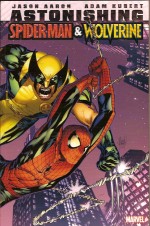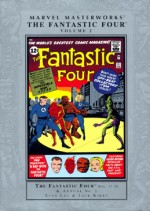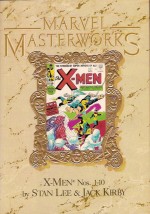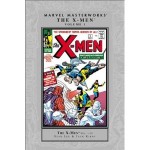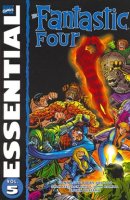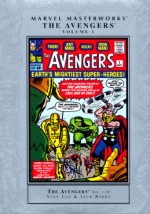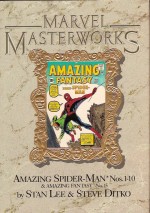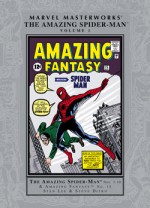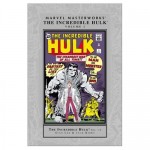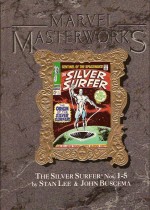
By Stan Lee, John Buscema & various (Marvel)
ISBN: 0-87135-631-7
Although pretty much a last minute addition to Fantastic Four #48-50’s ‘Galactus Trilogy’, Jack Kirby’s scintillating creation the Silver Surfer quickly became a watchword for depth and subtext in the Marvel Universe and one Stan Lee kept as his own personal toy for many years.
Tasked with finding planets for space god Galactus to consume and despite the best efforts of intergalactic voyeur Uatu the Watcher, one day the Silver Surfer discovered Earth, where the latent nobility of humanity reawakened his own suppressed morality; causing the shining scout to rebel against his master and help the FF save the world.
In retaliation, Galactus imprisoned his one-time herald on Earth, making him the ultimate outsider on a planet remarkably ungrateful for his sacrifice.
The Galactus Saga was a creative highlight from a period where the Lee/Kirby partnership was utterly on fire. The tale has all the power and grandeur of a true epic and has never been surpassed for drama, thrills and sheer entertainment. It’s not included here: for that treat you’ll need to see Essential Fantastic Four volume 3 or many other Marvel collections…
In 1968, after increasingly frequent guest-shots and even a solo adventure in the back of Fantastic Four Annual #5 (also omitted, but it is in Essential Fantastic Four volume 4) the Surfer finally got his own (initially double-sized) title at long last.
This stellar hardback deluxe edition collects the first five extra-length adventures from August 1968 to April 1969 and begins with ‘The Origin of the Silver Surfer!’ by Lee, John Buscema & Joe Sinnott who, after a prolonged flashback sequence and repeated examples of crass humanity’s brutal callousness and unthinking hostility, detailed how Norrin Radd, discontented soul from an alien paradise named Zenn-La, became the gleaming herald of a planetary scourge.
Radd had constantly chafed against a civilisation in comfortable, sybaritic stagnation, but when Galactus shattered their vaunted million years of progress in a fleeting moment, the dissident without hesitation offered himself as a sacrifice to save the world from the Devourer’s hunger.
Converted into an indestructible gleaming human meteor Radd agreed to scour the galaxies looking for uninhabited worlds rich in the energies Galactus needed to survive, thus saving planets with life on them from destruction. He didn’t always find them in time…
The stories in this series were highly acclaimed – if not commercially successful – both for Buscema’s agonised, emphatic and truly beautiful artwork as well as Lee’s deeply spiritual and philosophical scripts; with the isolated alien’s travails and social observations creating a metaphoric status akin to a Christ-figure for an audience that was maturing and rebelling against America’s creaking and unsavoury status quo.
The second 40 page adventure detailed a secret invasion by extraterrestrial lizard men ‘When Lands the Saucer!’ forcing the Surfer to battle the sinister Brotherhood of Badoon without human aid or even awareness in ‘Let Earth be the Prize!’…
A little side-note for sad nit-picking enthusiasts like me: I suspect that the original intention was to drop the page count to regular 20-page episodes from #2, since in terms of pacing both the second and third issues divide perfectly into two-parters, with cliffhanger endings and splash page/chapter titles that are dropped from #4 onwards.
Silver Surfer #3 is pivotal in the ongoing saga as Lee & Buscema introduced Marvel’s Satan-analogue in ‘The Power and the Prize!’
Mephisto is Lord of Hell and saw the Surfer’s untarnished soul as a threat to his evil influence on Earth. To crush the anguished hero’s spirit the demon abducted Norrin Radd’s true love Shalla Bal from still-recovering Zenn-La and tormented the Sentinel of the Spaceways with her dire distress in his sulphurous nether-realm…
The concluding chapter sees mortal angel of light and devil of depravity conduct a spectacular ‘Duel in the Depths’ wherein neither base temptations nor overwhelming force were enough to stay the noble Surfer’s inevitable triumph.
Just as wicked a foe then attempted to exploit the Earth-bound alien’s heroic impulses in #4’s ‘The Good, The Bad and the Uncanny!’ (inked by new art collaborator Sal Buscema) wherein Asgardian God of Evil Loki offered lies, deceit and even escape from Galactus’ terrestrial cage to induce the Silver Stalwart to attack and destroy the Mighty Thor; resulting in a staggering and bombastic clash that just builds and builds as the creative team finally let loose and fully utilised their expanded story-proportions and page count to create smooth flowing epic action-adventures.
This magical collection concludes with a powerful parable about race, prejudice and shared humanity when the Surfer was befriended by ostracised black physicist Al Harper in ‘…And Who Shall Mourn Him?’
As the two outcasts bonded the scientist realised he might have a way to free the Surfer from his Galactine incarceration, but as they put their plan into operation remorseless alien entity The Stranger turned up, determined to erase the potential threat mankind offered to the rest of the universe. To stop him both Harper and Norrin Radd had to sacrifice everything they cherished most for a world that didn’t care if they lived or died…
The Silver Surfer was always a pristine and iconic character when handled well Рand sparingly Рand these early forays into a more mature range of adventures, although perhaps a touch heavy-handed, showed that there was far more to comicbooks than cops and robbers or monsters and misfits. That exploratory experience and mystique of hero as Christ allegory made the series a critically beloved but commercially disastrous cause celebr̩ until eventually financial failure killed the experiment.
After the Lee/Kirby/Ditko sparks had initially fired up the imaginations of readers in the early days, the deeper, subtler overtones and undercurrents offered by stories like these kept a maturing readership enthralled, loyal and abidingly curious as to what else comics could achieve if given half a chance and this fabulously lavish tome offers the perfect way to discover or recapture the thrill and wonder of those startlingly different days and times
© 1968, 1969, 1990 Marvel Entertainment Group/Marvel Characters, Inc. All rights reserved.

